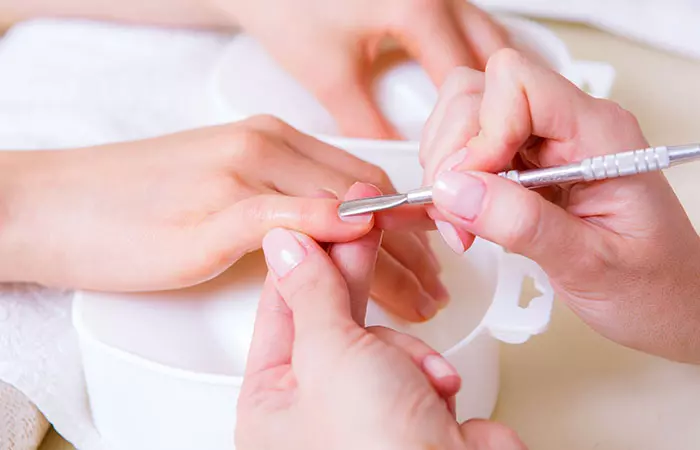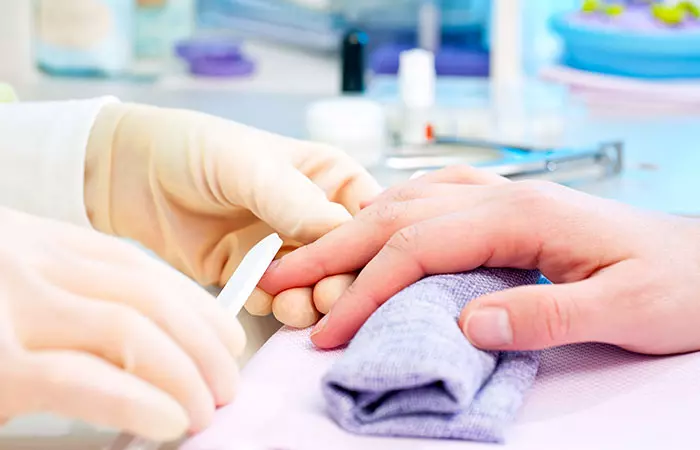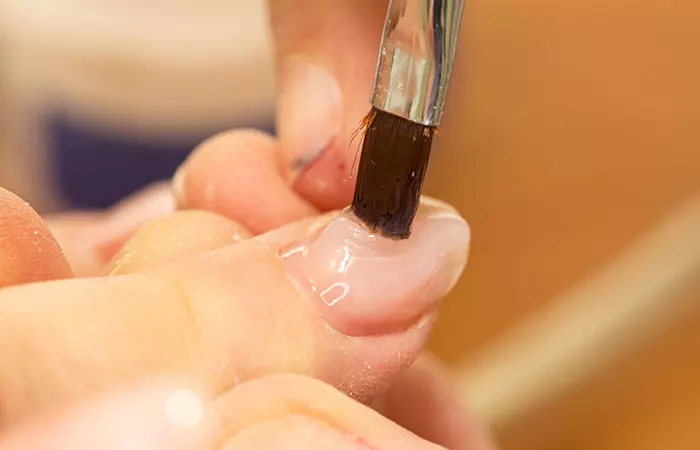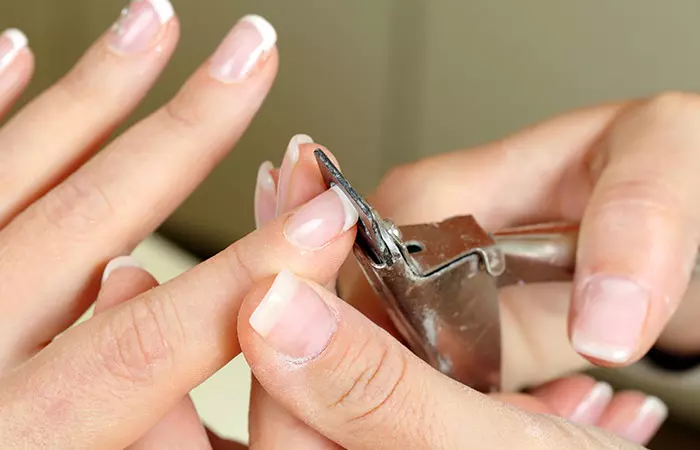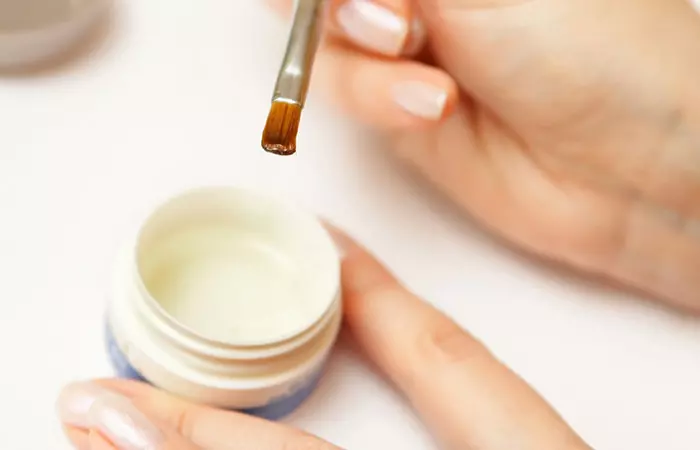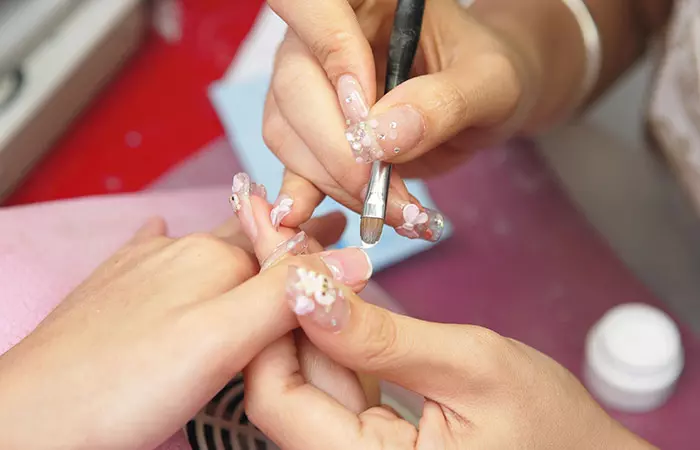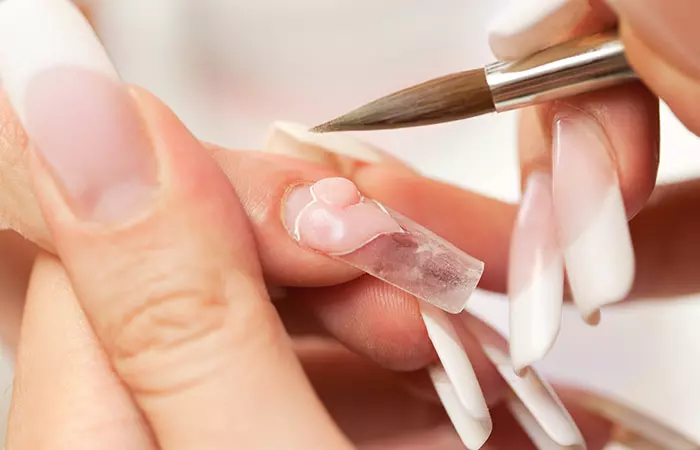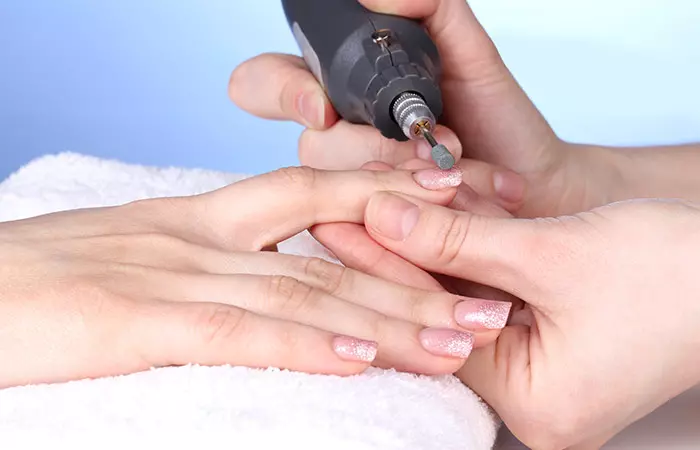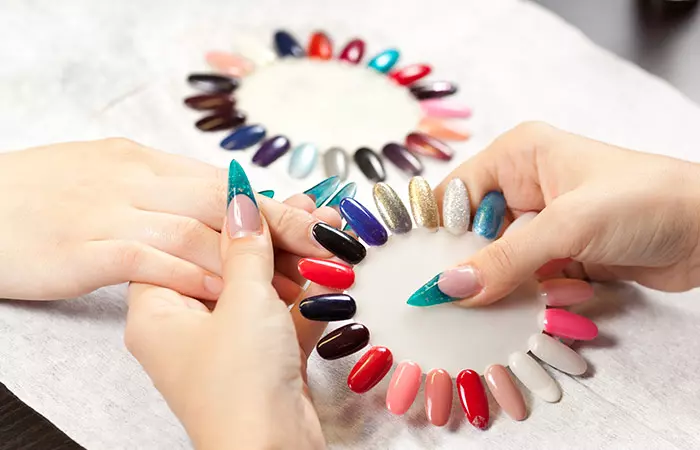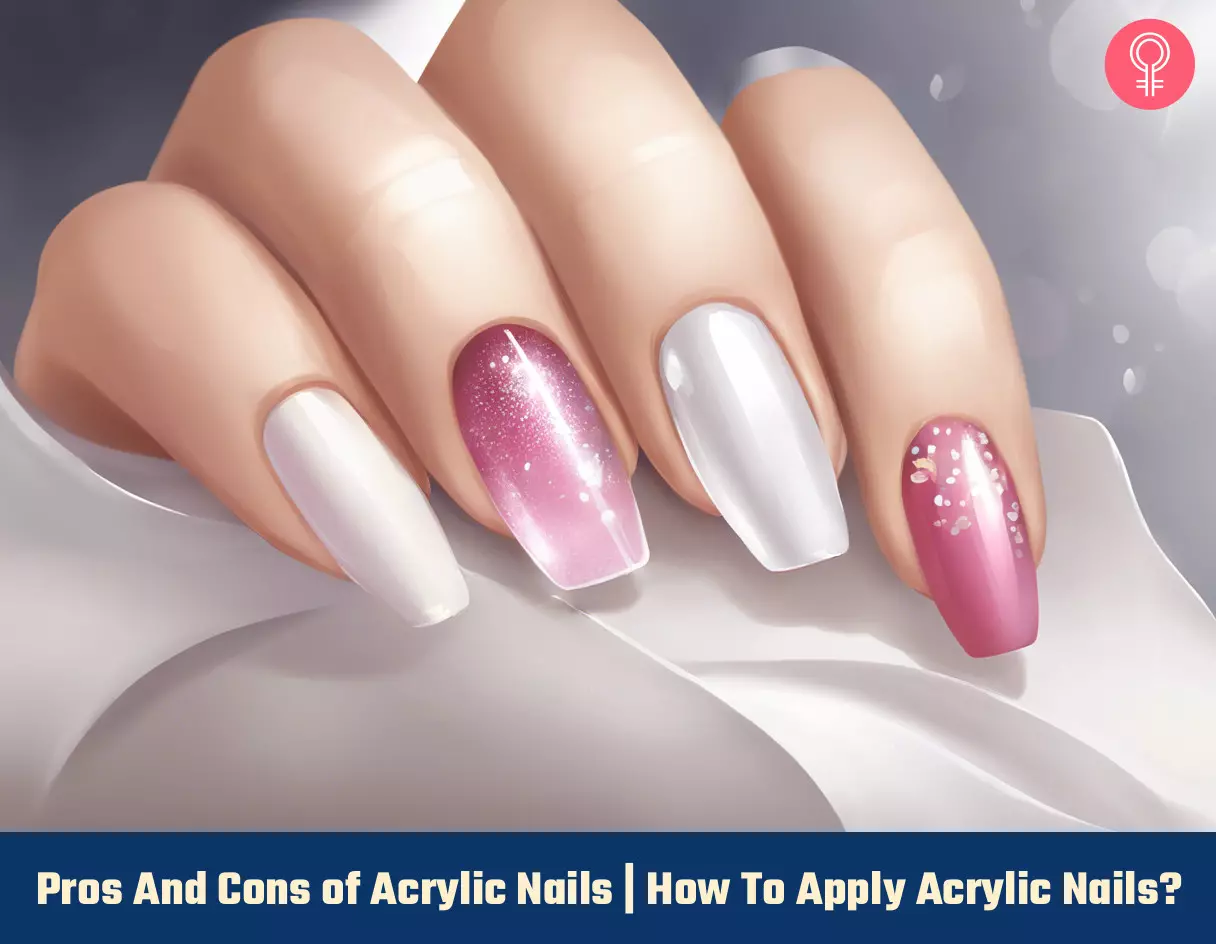These nails mimic the appearance of natural nails. However, before getting them done, you should be aware of the pros and cons of acrylic nails. Acrylic nails are for you if you want to attend every special occasion or wedding with stylish nails or appreciate well-groomed and manicured nails. In the 21st century, anything is possible. So go for it, don’t hesitate! Blair, a blogger, shared her experience of getting acrylic nails and being obsessed with them. She said, “I have had a really good experience with acrylics. I’m sure there are horror stories out there and people saying they’ll never get them because they’re harmful and blah blah. I have to admit this is what kept me from getting acrylics for quite a while – just the whole stigma that my nails would be forever ruined and get infected. But finally, I just wanted to try them and figured it couldn’t be that dramatic, and went in to get them done. I was immediately hooked (i)!” Also, the blogger was pleased with the color after getting her nails done. Experts say it is recommended to get acrylic nails done by a professional because you can not do it smoothly at your home. Moreover, it needs special training to be done. So, you should only attempt it at home if you are a manicurist or trained expert.
Pros And Cons of Acrylic Nails
Pros
Acrylic extensions are suitable for women with brittle and weak nails.
Acrylics are good for women, who have a bad habit of chewing their nails as they are very hard to chew off. What better way to ward off an unwanted habit than making the damaged area as pretty as possible?
Acrylic nails have been around longer than their counterparts, so, most nail technicians at salons and spas have a lot of experience about how to apply and remove these nails. You don’t have to worry about side effects as such.
They have the affordability advantage. The lighter the wallet, the more the happiness. Agree?
One of the primary benefits of acrylic nails is that if one of them breaks, it can be fixed at home by using the right tools. You don’t have to spend a bomb again to get them rectified.
They last longer than gel nails.
Cons
They can damage your natural nail underneath, and it can be hard to grow out your nails with acrylic over them. Also, a damaged nail is a breeding ground for fungus and bacteria.
As Acrylic nails are artificial enhancements, they present a fake look. You need a very talented technician who can apply your acrylics as close to natural ones.
Application of acrylic nails involves the use of strong chemicals and formation of fumes. Some women may have an allergy to such substances.
You need refilling every month which means extra expenditure.
Now, let’s look at the steps to be followed to apply these nails.
How To Apply Acrylic Nails
Step 1: Prep The Nails
Always start with clean nails. Providing a smooth base helps the acrylic material to go on better. Remove any nail polish and push back the cuticles.
Step 2: Trim Nails
The manicurist will probably trim and file your nails while leaving a few millimeters so that the nail extension can be stuck.
Step 3: Buff Nails
She will then buff your nails so that the surface of your nails are a little rough. This rough surface makes it easy for the acrylic to stick to.
Step 4: Nail Primer
A nail primer would be used to remove any remaining moisture and oil from the nails. Use a cotton swab with acetone to clean the nails and then apply the primer over the nails. Some of the primers contain an acid called methacrylic acid. Be careful as it may burn. You can also use the acid-free primer if you are unsure.
Step 5: Application Of The Tips
This is where the actual application begins. Mastering how to apply nail extensions is essential for achieving the perfect look with acrylic nails. The tips would be filed according to your nails and will be applied with glue to your real nails. The glue should not touch your skin. The nail can be cut and sized according to your specifications.
Step 6: Prepare The Acrylic Material
The acrylic liquid would be poured into an acrylic dish and some of the powder into another dish. A word of caution: One of the drawbacks is that the fumes are strong while using acrylics so this should be done in a well ventilated area.
Step 7: Pick Up The Acrylic With The Brush
The manicurist will dip the brush all the way down into the liquid. Make sure there are no bubbles. She will brush any excess liquid against the side of the dish to prevent it from dripping. Then, she will run the brush against the powder so that you get a moist ball. This is the material that is to be spread on the nail.
Step 8: Apply The Mixture
Without touching the cuticles, she will apply the mixture over your nails and smoothen it out as it is being applied. The transition between the tip and your natural nails should be smooth. Apply another layer if required.
Step 9: Let It Dry
It should take about ten minutes to dry. Once this is done, buff and file the nails to make them smooth.
Step 10: Finishing Touches
Your nails are ready to be painted! Choose from various experimental acrylic nail designs to find your style and flaunt it confidently.
Things You Must Remember When Getting Acrylic Nails
Keep Your Nails Healthy: It is extremely important to keep cleaning your nails. Especially since there is an entire layer covering your real nails. Make it a point to regularly clean your acrylic nails. Use a soft bristle brush under and around the nails to clean hard dirt. Then use a cotton swab with some alcohol to clean around the cuticles and under the nails.
Find Yourself A Regular Manicurist: Finding a manicurist that you can regularly go to makes life so much easier. She will understand your concerns, and since she knows your nail’s weaknesses, negative aspects, and your problems as well as the good points, you can save time trying to explain.
Keep Your Nails Dry: Whenever you wash your hands, dry them completely! If you leave them wet, there are chances for your acrylic layers to lift and also a fungal growth! This may be considered a disadvantage, but you need to wear gloves if you are doing the dishes.
Oil Your Nails: Dry nails can break easily. Use a neutral oil such as rapeseed oil to keep them moisturized.
Besides acrylic, gel nails are also widely used in nail styling. But there are some differences between these two. Scroll down to know more.
Acrylic Vs. Gel Nails
Understanding the difference between acrylic and gel nails can help you make an informed choice when opting for acrylic nails. Acrylic nails are created with liquid monomer and powder polymer that hardens when exposed to air. They are durable, long-lasting, and offer a robust extension for nails, ideal for those seeking added length and strength. However, they can appear thicker and require regular maintenance. Gel nails, on the other hand, involve applying gel polish that is cured under LED or UV lamps. They provide a natural, glossy look and tend to be more flexible and lightweight compared to acrylics. Gel nails offer a smoother finish and are less likely to cause damage to the natural nail during removal, but they may not be as durable as acrylics. Both offer beautiful results, so selecting the right option often comes down to individual needs and nail care habits. That’s all about acrylic nails. Do acrylics ruin your nails? Prolonged use of acrylics has downsides and will weaken and stain your natural nails. Additionally, poor application and removal of acrylics can leave your nails thin and brittle. Is acrylic better than gel nails? Acrylic nails are sturdy and have a more creative scope. However, gel nails last longer without chipping and may also be healthier for your nails as they do not contain toxic chemicals like toluene or methyl methacrylate. Consult a professional and understand your options before choosing the one that is suitable for you. Do acrylics help your nails grow? No, acrylics are not capable of making your nails grow.
Illustration: Pros And Cons of Acrylic Nails | How To Apply Acrylic Nails?
Explore the pros and cons of acrylic nails and details about the latest nail trends! Play this video to decide what is right for you or to pick something completely new.
